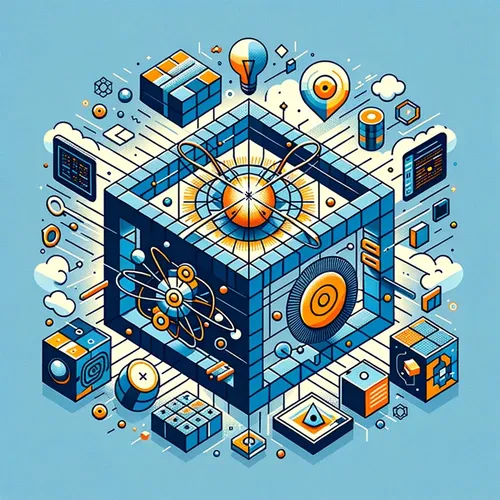Quantum-Classical Fusion: Oak Ridge's Diamond-Powered Leap into the Future
- Author
- Quiet. Please
- Published
- Mon 08 Sep 2025
- Episode Link
- https://www.spreaker.com/episode/quantum-classical-fusion-oak-ridge-s-diamond-powered-leap-into-the-future--67676921
This is your Quantum Computing 101 podcast.
You’re listening to Quantum Computing 101. I’m Leo—the Learning Enhanced Operator—and today, I want to take you inside a story that’s unfolding right now at the crossroads of quantum and classical computing. Just days ago, Oak Ridge National Laboratory made headlines by installing a new quantum-classical hybrid system—a joint effort with Quantum Brilliance—and for me, this marks a thrilling leap into the future of computation.
Picture this: the gentle hum of high-performance servers, the tactile click of diamond-coated devices settling into racks, and the sense that beneath your fingertips, you hold a piece of tomorrow’s scientific toolbox. These environments are electric, in every sense. Oak Ridge’s hybrid system blends Quantum Brilliance’s compact diamond quantum processing units right alongside classical giants—CPUs and GPUs—creating a parallelized and tightly integrated workflow unlike anything we’ve seen before. Travis Humble, director of the Quantum Science Center at ORNL, describes this as paving the way for leadership-class systems where scientific discovery can unfold at unprecedented speed and scale. Quantum Brilliance’s CEO, Mark Luo, calls it “building a future where quantum and classical systems collaborate on an unprecedented scale,” with the promise of millions of interoperating devices ahead.
Why does the hybrid solution matter? Think of classical and quantum like master chess players playing together. Classical computing is tireless, methodically crunching data with precision. Quantum, meanwhile, offers bursts of intuition—solving problems by considering every possible move simultaneously. And today, at Oak Ridge, these worlds merge. Quantum Brilliance’s diamond-based QPUs operate at room temperature, immune to the disruptive jitters that plague traditional superconducting qubits. The diamond structure acts as a shield: even in a bustling, warm data center, it preserves qubit coherence, allowing experiments in machine learning and computational chemistry to stretch further than ever before, all without the logistical ballet of lasers, vacuums, or cryogenics.
This isn’t just theory; hybrid workflows are accelerating real research today. Oak Ridge’s Ashley Barker underscores that marrying both systems means “better scientific outcomes,” with researchers now tuning performance, co-scheduling workloads, and orchestrating end-to-end discoveries at the bleeding edge. Quantum tasks—optimization, simulation, cryptography—pass off complexity to their quantum partners, while classical computing keeps results grounded and accessible.
There’s drama to this, too—a sense of standing at the event horizon of the next compute revolution. Just as hurricanes are becoming more unpredictable and global supply chains are tested by new challenges, quantum-classical hybrids promise tools for modeling chaos itself. The diamond QPU is not just a scientific instrument; it’s a metaphor for resilience and clarity under pressure, a lesson for our complex world.
If you’re sensing the quantum parallels to today’s challenges, you’re not alone. Hybrid quantum-classical computing is reshaping not only research but how we imagine possibility itself. Thanks for joining me, Leo, for Quantum Computing 101. Remember, if you’ve got questions or burning topics for the show, just email me: [email protected]. Don’t forget to subscribe—and as always, this has been a Quiet Please Production. For more, check out quietplease.ai.
For more http://www.quietplease.ai
Get the best deals https://amzn.to/3ODvOta
